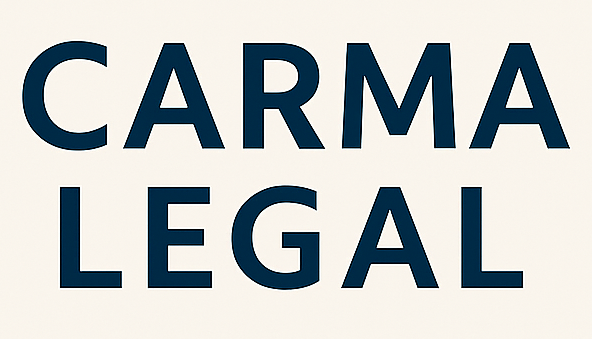Scaffolding accidents can cause serious harm, and you may wonder when to contact a scaffold accident attorney to protect your rights and secure full compensation. Because these incidents often involve multiple responsible parties—from property owners and general contractors to equipment manufacturers—establishing third-party liability requires a strategic approach and legal expertise. Early intervention by legal counsel can preserve crucial evidence, meet deadlines, and improve your chances of a successful claim.
According to OSHA, scaffolding accidents result in roughly 4,500 injuries and 50 fatalities each year in the US [1]. As a result, understanding the basics of these injuries, your legal options, and the right time to seek help is essential for anyone injured on the job or at a worksite.
Scaffolding accident basics
Common causes
- Improper assembly or installation, such as incorrect locking of wheels or failure to secure supports [2]
- Lack of fall protection systems—missing guardrails, toeboards, or safety netting [3]
- Overloading the scaffold beyond its rated capacity
- Defective equipment or manufacturing flaws leading to structural failure [4]
- Environmental conditions such as high winds, rain, or icy surfaces
- Inadequate training or supervision of workers using the scaffold
- Electrocution hazards when scaffolds are erected near power lines [2]
Typical injuries
- Traumatic brain injuries and concussions
- Spinal cord injuries leading to partial or full paralysis
- Compound fractures and crush injuries
- Internal organ damage from falls or impact
- Severe lacerations and contusions
- Psychological trauma, including anxiety and post-traumatic stress
Recognizing your injuries
After a scaffolding collapse or fall, your immediate priority is health and safety. Even if injuries seem minor, hidden trauma can surface later. You should:
- Seek prompt medical evaluation and follow-up care
- Keep copies of all medical records, test results, and treatment plans
- Note any new or worsening symptoms, including headaches, back pain, or numbness
- Record how the injury affects your daily life and work capabilities
Recognizing the full extent of your injuries not only ensures proper treatment but also strengthens your later legal claim.
Understanding third-party liability
Third-party liability involves suing someone other than your employer or filing a workers’ compensation claim. In scaffolding cases, multiple entities may share responsibility for unsafe conditions or equipment failure.
Parties at fault
- General contractors, who must maintain overall site safety and comply with building codes
- Subcontractors, responsible for proper scaffold assembly and maintenance
- Property owners, if defective site conditions contributed to the accident
- Equipment manufacturers or suppliers, when scaffolding components fail due to design or production flaws
- Inspection or rental companies, if they rented out damaged or non-compliant scaffolding
If negligence by any of these third parties caused or contributed to your injury, you may need a third party injury claim lawyer to help navigate complex liability issues. Additionally, equipment failures might require consultation with an injury from defective equipment lawyer.
Documenting your accident
Gathering thorough documentation is critical in building your case and preserving evidence before it disappears or is altered. You should:
- Photograph the accident scene, including damaged scaffolding, guardrails, and surroundings
- Collect contact information of witnesses, co-workers, and onsite supervisors
- Obtain site inspection reports, maintenance logs, and training records
- Save any correspondence with your employer, contractors, or insurers
- Request a copy of your employer’s incident or OSHA report
Maintaining an organized file with dated records and photos will help your attorney establish the facts and hold negligent parties accountable.
Knowing when to act
Statutes of limitations set strict deadlines for filing a third-party liability lawsuit. These vary by state but often range from one to three years after the date of injury. To protect your claim:
- Contact legal counsel as soon as possible, ideally within weeks of the accident
- Avoid sharing details on social media or with insurance adjusters without an attorney present
- Preserve all physical evidence and keep detailed notes of conversations related to the incident
- Be aware that delays in investigation can weaken your case and make it harder to locate witnesses
Acting promptly helps ensure you meet all legal requirements and preserve critical evidence.
Choosing an attorney
Selecting the right attorney can make a significant difference in the outcome of your claim. Consider these factors when evaluating potential legal representation.
Key qualifications
- Proven track record in scaffolding or construction accident cases
- Experience handling third-party liability claims, not just workers’ compensation
- Access to experts in engineering, safety standards, and medical specialties
- Ability to negotiate effectively with insurance companies and take cases to trial
- Transparent fee structure, typically on a contingency basis
Questions to ask
- How many scaffolding accident cases have you handled?
- What percentage of your cases go to trial versus settle?
- Who will handle my case day-to-day and how often will I receive updates?
- Can you provide references from past clients?
- Do you advance case costs, or will I be responsible up front?
A construction accident lawyer with these credentials can guide you through every stage of your claim.
Navigating the claims process
While each case is unique, the typical steps in a third-party scaffolding claim include:
- Initial consultation and case evaluation
- Investigation of accident scene, equipment, and site safety records
- Demand package sent to responsible parties or insurers
- Negotiations for a settlement based on economic and non-economic losses
- Filing a lawsuit if negotiations stall or liability is disputed
- Discovery phase, including depositions and expert testimony
- Mediation or trial, where liability and damages are resolved
Throughout this process, your attorney will protect your rights, handle communications, and ensure deadlines are met.
Taking next steps
You do not have to face the aftermath of a scaffolding injury alone. By acting quickly and partnering with experienced legal counsel, you can focus on recovery while your attorney pursues the compensation you deserve. To discuss your case and learn about your options, reach out for a free consultation with a dedicated construction accident lawyer today.








